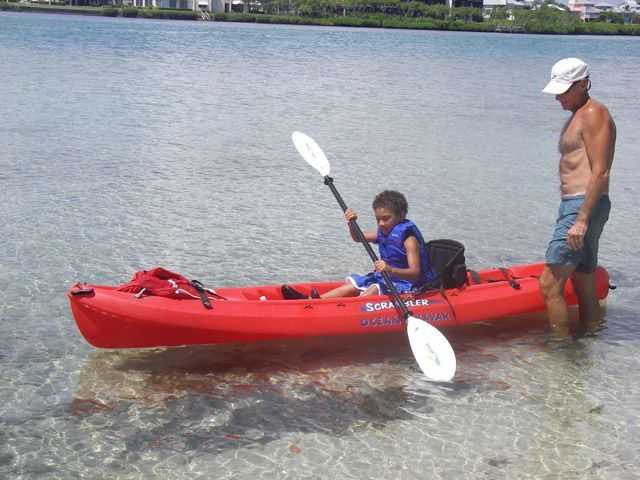
By paddling enthusiast and self-proclaimed “fishaholic” Jack Roberts.
My friend Mick loves to paddle, and he really, really wants to buy a kayak. I know this because he talks about little else whenever he and I are in the same room. I’ve taken him out on a number of day trips over the years, and whenever he returns from a vacation he calls to tell me about the great kayaking he did at the all-inclusive resort on the Mexican Riviera, or in a rented kayak on some beautiful lake in the Adirondacks. But that’s it; that’s the extent of the poor guy’s paddling experience. You see, Mick suffers from “Failure to Launch”. It’s not the Hollywood version; it’s the strain that prevents otherwise well-adjusted individuals from buying their own kayaks. I know it makes him unhappy.
My friend MB loves to paddle, but she really, really dislikes her kayak. I know this because she talks about little else whenever she and I are on the water together. Her kayak is, in fact, a pitiful little tub that she bought at a discount store ten years ago when she first moved to the Treasure Coast. But she had decided, “by golly” (she’s from Wisconsin), that she wanted a kayak, so she didn’t dither, she didn’t agonize. She didn’t spend months studying reviews. She didn’t join forums. She just bought the thing. She knew that if she made a mistake she could get something better later on, and she refused to submit to “Failure to Launch.” Since that time she has paddled many miles on waterways all over Florida, enjoying the experiences that make us want to be out there. I know it makes her happy.
If you want to get started in kayaking, be an MB; don’t be a Mick.
There are many people who “really, really” want kayaks but don’t have them. I’ve made a study of this sad situation and I think I’ve uncovered some basic truths about why they don’t; here’s the results:
- People who have never owned boats, canoes, surfboards, sailboards, etc. may simply be intimidated by the prospect of owning and managing their first “vessel“, even though the vessel is, in reality, a 50-pound piece of plastic.
- People have uncertainty regarding the storage of a kayak.
- People have uncertainty regarding the transportation of a kayak.
- People are not sure where they can use a kayak.
- People have serious concerns regarding kayak safety.
- People realize that there are hundreds of models of new kayaks available, and they fear making a large investment in the wrong choice.
The first five items on this list are genuine concerns, but they all have relatively simple solutions. We will discuss them here in future articles. Don’t let any of them infect you with “Failure to Launch.”
Now, let’s talk about number six. If cost is one of your concerns, and it should be, then don’t make the large investment. Ease the pressure, and buy used. Accept the fact that you don’t know diddly about kayaks, and don’t care to take the time necessary to do research. One day of paddling any kayak, good or bad, will teach you things you can’t learn from the websites or videos. Accept the fact that your first kayak will probably not be your last. Don’t obsess over brand names and models. As a novice, just look for a polyethylene “recreational” (aren’t they all?) boat in the 12 to 14’ range. I recommend sit-on tops in our climate, but if you want the protection from ‘gators and sharks that the 1/8” plastic skin of a sit-inside affords, then go that way. Next, become familiar with Craigslist and the “$500 or less” classified ads in the TC Palm newspapers. You will be amazed at how many good kayaks are advertised for less than $400, and they often come with paddles and PFD’s. With your broad range of acceptable boats, something will appear sooner than later. When it does, strike quickly because the good ones go fast. You should do whatever you have to in order to take the boat for a test paddle. With this type of boat you shouldn’t worry too much about stability or speed; those will come later as your skills develop. You should be looking for comfort. Adjust the foot braces and seat-back; don’t expect a Barca-Lounger, but if you can’t find a reasonably comfortable position for your legs and butt, the boat will eventually make you hate it. Heft the boat, and expect it to weigh more than you’d like it to. Check inside the hull or under the edges of the hatch straps to see the original color. If the kayak is seriously faded, walk; its days are numbered. Inspect the bottom for creases or other damage (scratches are not damage, deep gouges are), check the bungee loops, hatch covers and handles. And then, by golly, if everything feels good, just buy the thing. MB and I will see you on the water. Mick, poor fellow, won’t.